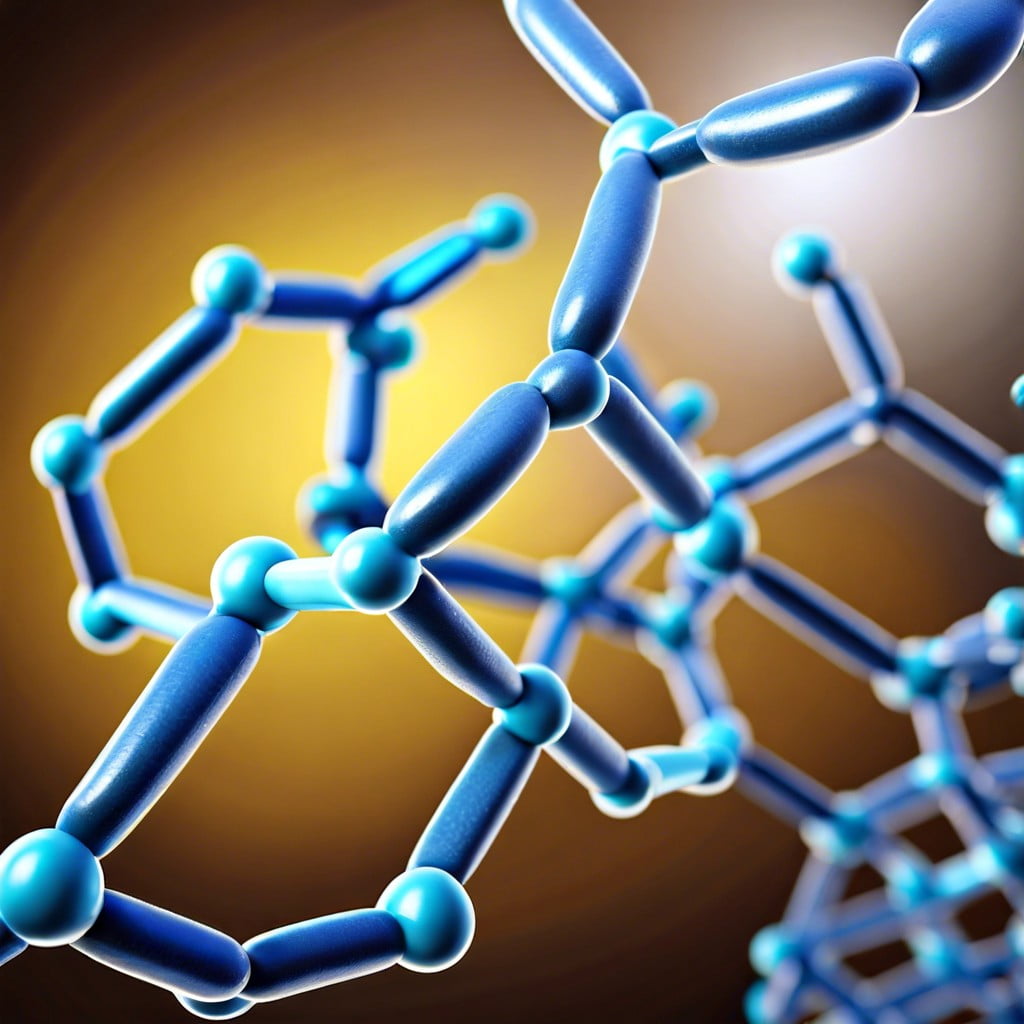This article clarifies the relationship between plastics and polymers, providing an essential understanding of what constitutes plastic materials in the context of polymer science.
Key takeaways:
- Polymers are large molecules made of repeating units.
- Not all polymers are plastics, but all plastics are polymers.
- Plastics can have diverse properties like flexibility and durability.
- Plastics are lightweight, durable, and resistant to water and chemicals.
- Polymers and plastics are widely used in construction for insulation, piping, flooring, coatings, and composites.
Definition of Polymer

Polymers are large molecules composed of repeating structural units called monomers.
These monomers are bonded together by covalent bonds to form a long chain.
Polymers can be natural, like cellulose in wood, or synthetic, like polystyrene or nylon.
Their properties depend on the type of monomers they contain and how these monomers are arranged.
This means polymers can vary widely in flexibility, strength, and durability, allowing for diverse applications, including construction materials, clothing, and everyday household items.
The chemical structure of polymers gives them unique characteristics, such as resistance to chemicals, insulation against electricity, and the ability to be molded into various shapes.
Definition of Plastic
Plastics are synthetic materials made from a wide range of organic polymers such as polyethylene, PVC, and nylon that can be molded into shape while soft, and then set into a rigid or slightly elastic form.
These versatile materials are created through a process called polymerization, where monomers, small and basic molecular building blocks, are chemically bonded into long chains.
Owing to their molecular structure, plastics can be engineered with a diverse array of properties, enabling them to be lightweight, durable, and resistant to water and chemicals.
Commonly found in packaging, household items, and in construction, plastics are integral to modern living due to their adaptability and strength.
Relationship Between Polymer and Plastic
All plastics are polymers, but not all polymers are plastics. Polymers are large molecules composed of repeating structural units, while plastics are a group of polymers that can be molded into various shapes. They typically have qualities that make them ideal for commercial and residential use: they’re lightweight, durable, and can be produced with a wide range of properties.
Variations in the arrangement of monomer units and the use of different chemical additives allow plastics to be engineered with specific characteristics for countless applications. Whether it’s the flexibility in a water hose or the rigidity of a PVC pipe, these are all thanks to the polymer makeup of plastics.
Environmental Impact: Recycling and Biodegradability
Polymers found in plastics can significantly affect the environment both during their use and after their lifecycle. Recycling is a key process for managing plastic waste by converting it into reusable materials, which helps in conserving natural resources and reducing pollution.
Not all plastics are recyclable, and the recyclability largely depends on the type of polymer, additives used, and contamination with other materials.
Biodegradability is another important aspect, referring to a material’s ability to be broken down by microorganisms into natural substances like water, carbon dioxide, and compost. While most conventional plastics are not biodegradable, there’s increasing interest in developing biodegradable polymers to reduce environmental impact.
These can decompose in specific conditions, reducing their persistence in the environment.
Understanding these concepts is crucial for developing sustainable construction practices, as the choice of materials will influence both the building’s lifecycle and its eventual disposal or reuse. Therefore, in construction, the selection of recyclable and biodegradable polymers contributes to a more sustainable industry.
Polymer and Plastic Use in Construction
Polymers, including plastics, have revolutionized the construction industry by offering benefits such as durability, flexibility, and cost-effectiveness. Here are some ways these materials are applied:
- Insulation and Energy Efficiency: Foam plastics like polystyrene and polyurethane are widely used for insulation. They help maintain temperature, reducing energy needs for heating or cooling.
- Piping Systems: Polyvinyl chloride (PVC) pipes are corrosion-resistant and lighter than traditional metal pipes, making them a popular choice for plumbing.
- Flooring and Roofing Materials: Polymer-based materials, such as epoxy and thermoplastic polyolefin, provide sturdy and waterproof surfaces for floors and roofs.
- Protective Coatings: Polymers offer protective coatings to protect structures from environmental damage. For example, silicone-based sealants keep moisture out, while polymer-based paints protect against UV rays.
- Composite Materials: Combining polymers with materials like fiberglass can create composites used in structural components that are high-strength yet lightweight.
These applications demonstrate the crucial role polymers, including various plastics, play in modern construction, improving safety, sustainability, and leading to smarter building practices.
Recap




